
Colocation America News Round Up: December 7 – December 11
December 11, 2015
5 Holiday Shopping Tricks To Keep You Sane
December 14, 2015The History of Video Games
Like most people my age (I’m 29, calm down), my first foray into games and gaming was the original Nintendo Entertainment System (NES), but video games had begun gaining traction as early at the 70’s with the spread of arcades and coin-operated games across the country. Gaming made its way into the home with the introduction of the Atari 2600 in 1977 and had become a cultural phenomenon by the time the NES rolled out in North America in 1985. By 1990, Nintendo released the Super Nintendo and Sega had released the Genesis and we were off to the console races that still continues this day with the Xbox One and PlayStation 4.
So, let’s eat a giant glowing mushroom, hop in a pipe, and take a trip down memory lane as we look back on how the technology behind gaming has taken leaps and bounds in only a few decades, as well as see how the technical specs of the early consoles match up to the latest and greatest in video-gaming.
ATARI 2600 (1977)
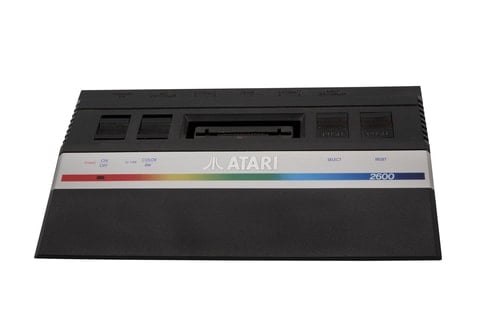
Specs:
- CPU: 1.19 MHz MOS Technology 6507
- Storage: Hahahahahaha what are save points?
- RAM: 128 bytes
- ROM: 4kb
- Audio/Video: Plug it into the back of your TV, yo.
- Resolution: 160 x 192 pixels
# of Atari’s Needed to Match Xbox One’s Specs: ALL OF THEM. TWICE.
At the peak of its popularity, the Atari 2600 was THE home video game system, selling over 30 million copies. It would take double that amount to even start the Xbox One.
NINTENDO ENTERTAINMENT SYSTEM (NES) (1983)
Specs:
- CPU: 8-bit microprocessor
- Storage: Hahahahahahaha again, save points?
- RAM: 2kB
- ROM: Varies from 8 kB to 1MB, with 128 kB to 384 kB being standard for most games
- Audio/Video: Plug it into the back of your TV, yo.
- Resolution: 256 x 240 pixels
# of NES’ Needed to Match Xbox One’s Specs: 4,000,000
Luckily, the NES solid a gajillion (approximate number) of consoles, becoming the best-selling video game console of all time. ALL TIME. Still, four million is a lot of equal the computing power of Microsoft’s flagship console.
SEGA GENESIS (1988)
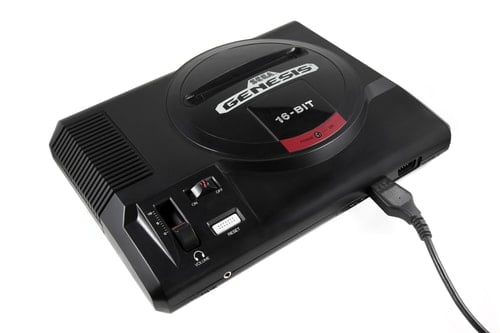
Specs:
- CPU: 7.6 MHz 16/32-bit Motorola 68000 CPU
- Storage: Nope, still none.
- RAM: 72 kB
- ROM: (No specs given for game cartridges)
- Audio/Video: Plug it into the back of your TV, yo.
- Resolution: 320 x 224 pixels
# of Genesis’ Needed to Match Xbox One’s Specs: 111,111
111,111 Genesis’ (Genesii?) are needed to match the computing power of an Xbox One. If the SEGA Genesis’ CPU was as fast as Sonic the Hedgehog, the console wars might’ve played out a bit differently.
SUPER NINTENDO ENTERTAINMENT SYSTEM (SNES) (1990)
Specs:
- CPU: Nintendo-custom 5A22 processor, based on a 16-bit 65c816 core
- Storage: Still not there yet, although save points started showing up! Hooray!
- RAM: 128 kB
- ROM: Could handle up to 128 Mbit, but the largest game was 48 Mbit, and the smallest was 2 Mbit, so somewhere in between.
- Audi/Video: Still not HD. Standard AV cables.
- Resolution: Progressive: 256×224, 512×224, 256×239, 512×239
# of SNES’ Needed to Match Xbox One’s Specs: 62,500
Not bad, but it’s still a lot. I would love to see Battlefield 4 attempt to render on SNES.
PLAYSTATION (PSONE) (1994)
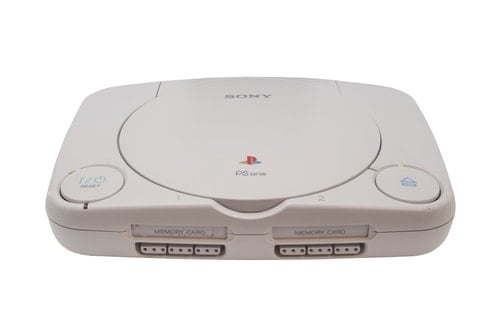
Specs:
- CPU: 32-bit RISC MIPS R3000A (33.8688 MHz)
- Storage: Memory cards! YES!
- RAM: 2MB
- ROM: CD’s! The PlayStation, while not the first to use CD-ROMs, popularized the movement by showing that they could be produced cheaper than the game cartridges and produce better technical results.
- Audio/Video: A/V Multi-Output– S-Video Components, RCA Composite…you choose.
- Resolution: 256×224 to 640×480 pixels
# of PSOne’s Needed to Match Xbox One’s Specs: 4,000
Now we’re getting (sorta) closer! Oh man, if you didn’t waste hours playing Crash Bandicoot or marathoning Metal Gear Solid (Just unplug your controller, move to player 2. I’m on to you, Mantis) I don’t really think we could be friends.
NINTENDO 64 (N64) (1996)
Specs:
- CPU: 93.75 MHz 64-bit NEC VR4300 (MIPS R4300i) with 24 KB L1 cache
- Storage: MORE MEMORY CARDS!
- RAM: 4 MB RDRAM (Rambus DRAM)
- ROM: Game cartridges, running at 264 MB/s. The Nintendo 64 was one of the few consoles that took advantage of the cartridges, using them as additional RAM, allowing for real-time data streaming.
- Audio/Video: A/V Multi-Output—S-Video, RCA Composite…you choose.
- Resolution: 480i standard resolution
# of N64’s Needed to Match Xbox One’s Specs: 2,000
Now we’re talking; the N64 was THE console (in this writer’s opinion) of the 90’s. If you didn’t have an N64 equipped with Goldeneye 007, I REALLY don’t know if we could be friends. For real, I will ruin all of you with Jaws inside The Stacks.
XBOX (ORIGINAL) (2001)
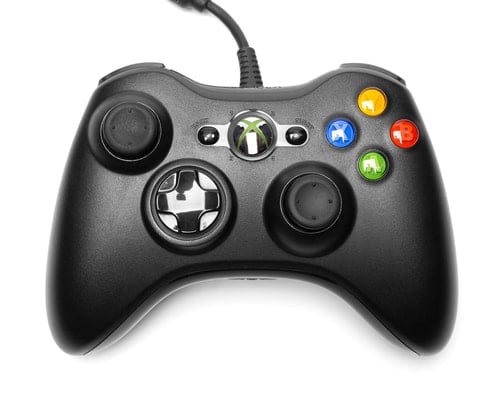
Specs:
- CPU: 32-bit 733 MHz, custom Intel Pentium III Coppermine-based processor
- Storage: 8 or 10 GB onboard HDD, used primarily for game saves and to reduce load times. 32MB memory cards were also available to ransfer saved game files.
- RAM: 64 MB DDR SDRAM
- ROM: CD/DVD-ROM
- Audio/Video: A/V Multi-Out, including composite, S-Video, etc.
- Resolution: Sweet, sweet HD, up to 1080p, depending on your TV.
# of Xbox’s Needed to Match Xbox One’s Specs: 125
Think about that—from 2001, when the Xbox was originally released, until now–it would still take 125 times the power to match the hardware of today.
PLAYSTATION 2 (PS2) (2000)
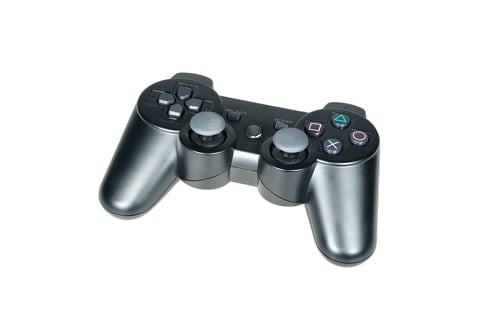
Specs:
- CPU: MIPS R5900-based “Emotion Engine”, clocked at 294.912 MHz
- Storage: No onboard HDD, 8MB Memory Cards were available. Also, PS2 had an expandable HDD port on the back of the console.
- RAM: 32 MB RDRAM (Direct Rambus DRAM)
- ROM: CD/DVD-ROM
- Audio/Video: A/V Multi-Out
- Resolution: More of that sweet, sweet HD goodness.
# of PS2’s Needed to Match Xbox One’s Specs: 250
The PS2, the most popular console of all time—selling a record 155 million units worldwide—still wasn’t able to match the technical specs of the first Xbox, and would need double the amount to match the Xbox One’s specs. I was—and still am—a PlayStation guy, and I’ll be damned if I didn’t spend hours upon hours with friends crowded around my copy of Grand Theft Auto 3. Get your armor, get your weapons, go on a rampage, pass the controller off when you die. Ahhh, the memories.
And beyond that, we enter the HD era, where both Sony and Microsoft’s consoles are so far advanced and in line with the most recent technology, that their only rival is the actual PC’s that are the frontrunners in technological advancements. Consoles have become more than just video game systems, as evidenced by both the introduction of the PS3 and Xbox 360 as home entertainment systems with their own vibrant OS’s, allowing for the viewing of Blu-Ray movies, music, and streaming services like Netflix; a that trend continues today with the release of the PS4 and Xbox One as home entertainment giants.
If you’re wondering why we skipped over a few consoles like the SEGA Dreamcast, or the Nintendo Gamecube, you’re probably one of the only people that bought those consoles, and I feel bad for you. But I do respect your dedication to niche products while your friends were all having tournaments on Madden ’04 for PS2 or Xbox. I’m sure you had a blast playing Animal Crossing.
We hope you enjoyed this look back at the technological growth of video game systems! Feel free to comment about your favorite gaming consoles and memories!


1 Comment
I remember when the first PlayStation came out. It was so exciting to have a console that could play games from all over the world.